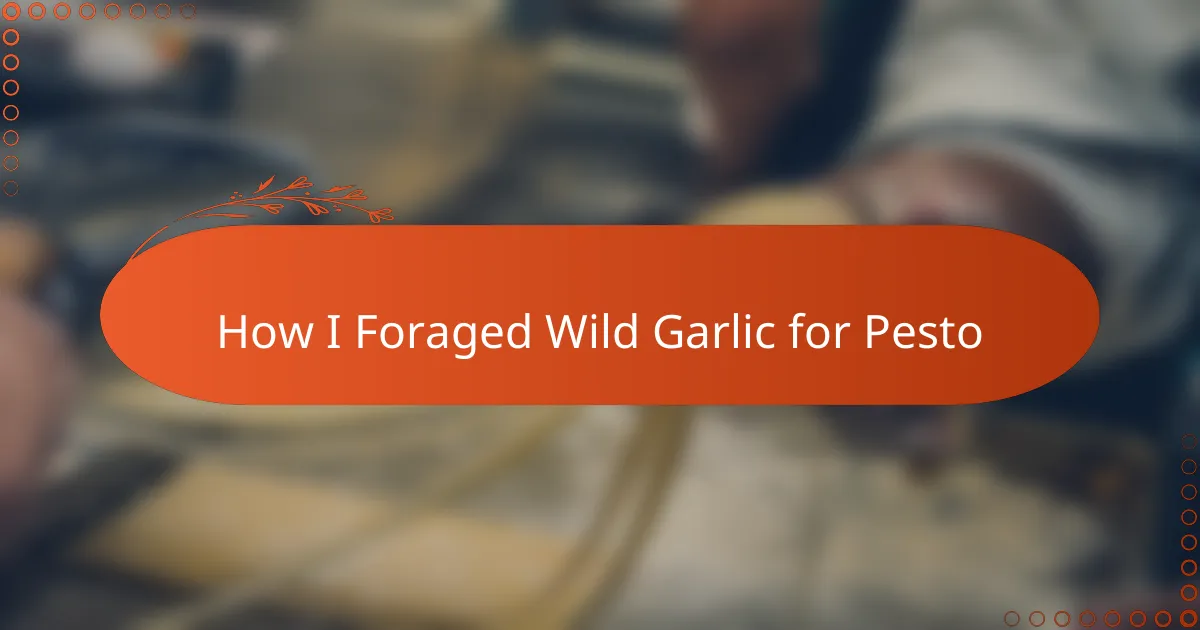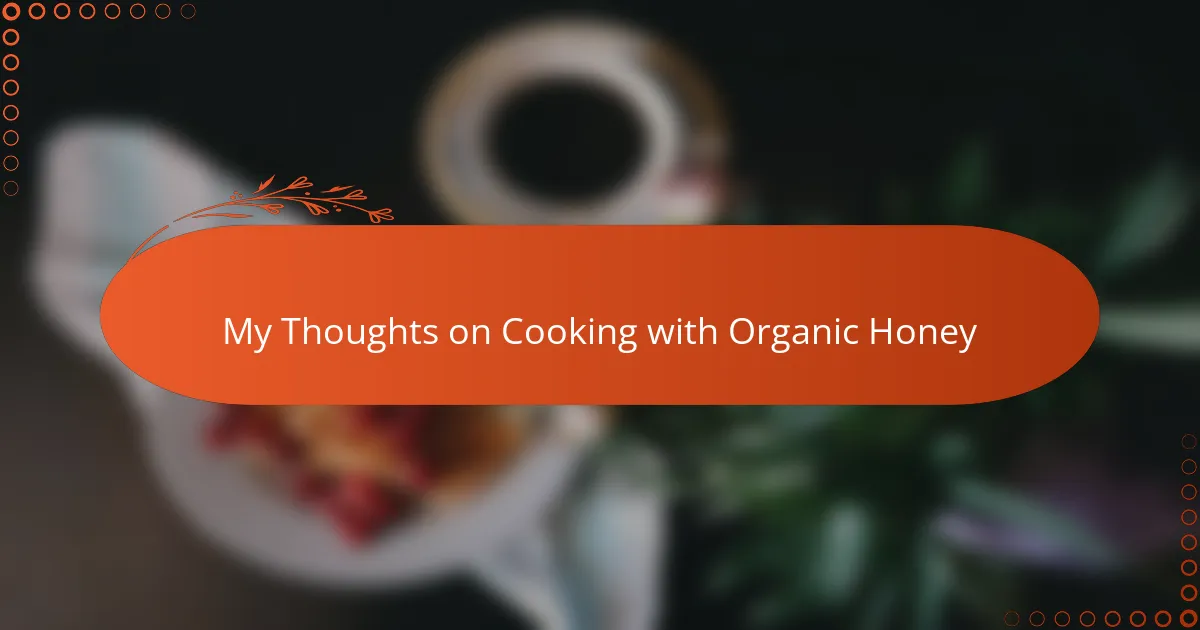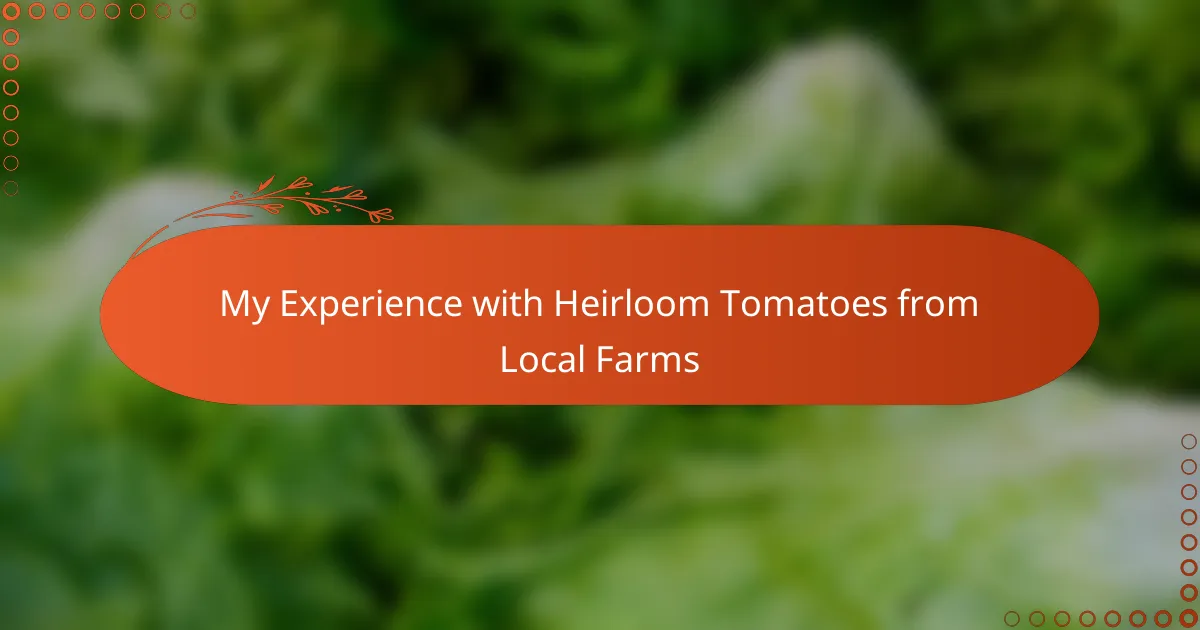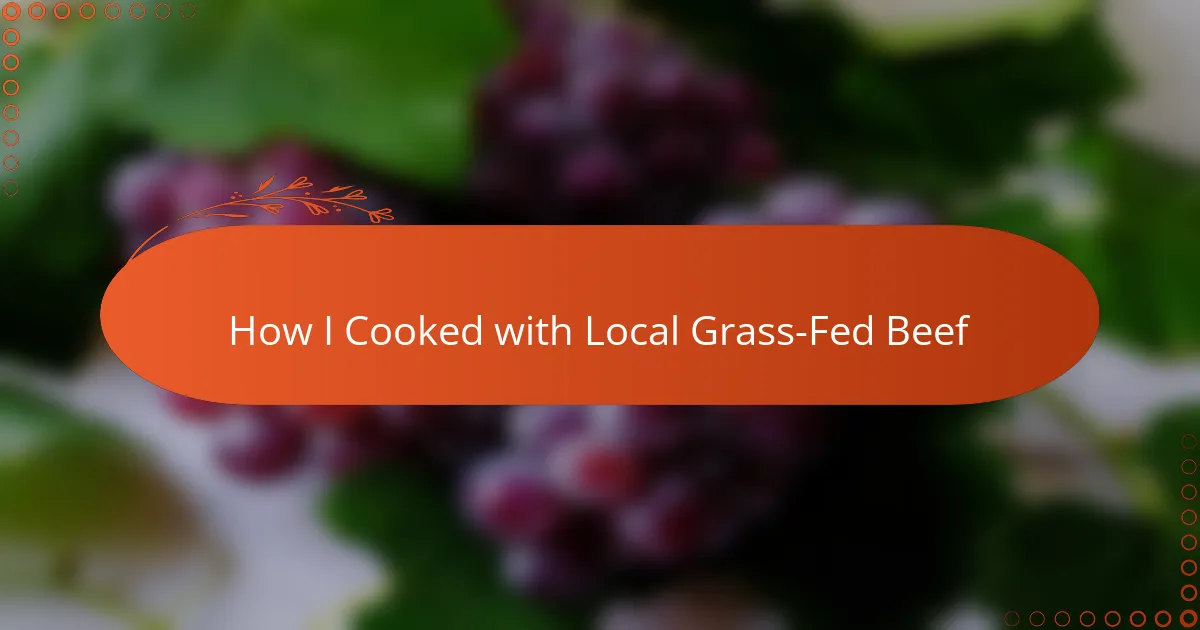Key takeaways
- Homesteading cooking fosters a deep connection with food and nature, emphasizing the importance of fresh, wild ingredients.
- Wild garlic is a rewarding foraging adventure; identifying it accurately and learning its growth cycle are essential for safe harvesting.
- Harvesting techniques, such as using scissors and taking small batches, contribute to sustainability and respect for the environment.
- Wild garlic pesto can be creatively adjusted and stored properly to maintain its vibrant flavor, enhancing various dishes beyond pasta.
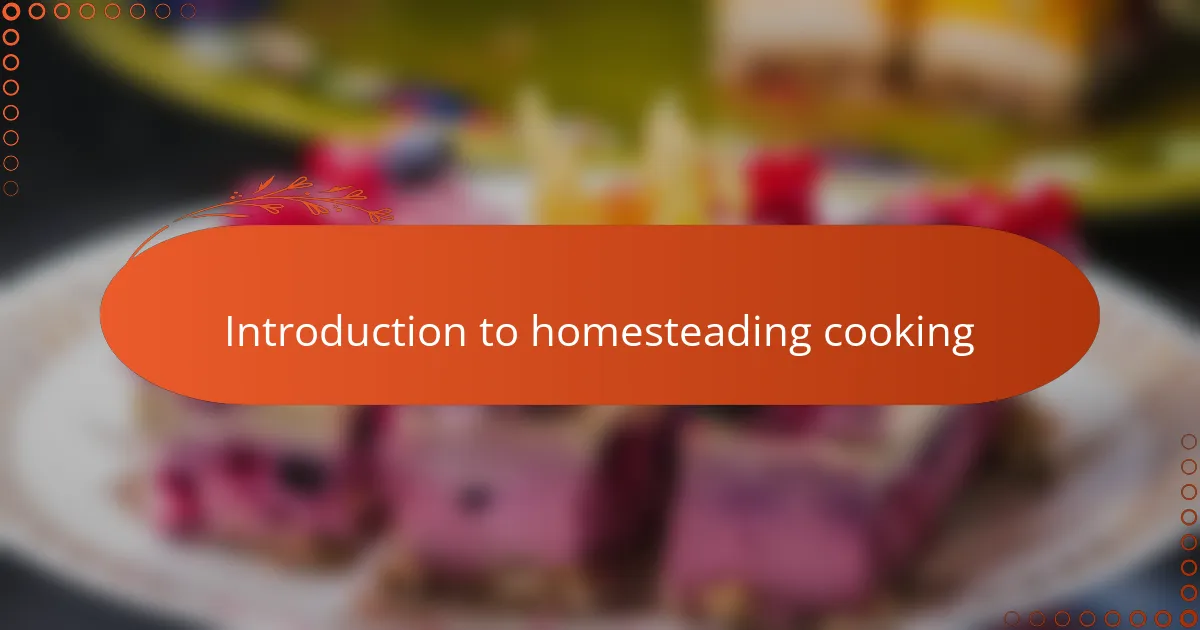
Introduction to Homesteading Cooking
Homesteading cooking, to me, is more than just preparing meals; it’s a way of connecting deeply with the food I put on my plate. Have you ever paused to think about where your ingredients come from and what that journey means? This approach brings a sense of satisfaction and respect for nature that’s hard to find in store-bought food.
When I first started homesteading, I was amazed by how much joy came from using fresh, wild ingredients right from the land around me. There’s something profoundly grounding about harvesting and cooking what nature offers, turning simple plants into nourishing dishes filled with memories and tradition.
Isn’t there something magical about turning the raw bounty of the earth into a vibrant meal? Homesteading cooking reminds me to slow down, appreciate the seasons, and embrace the art of making food that’s honest, wholesome, and full of life.
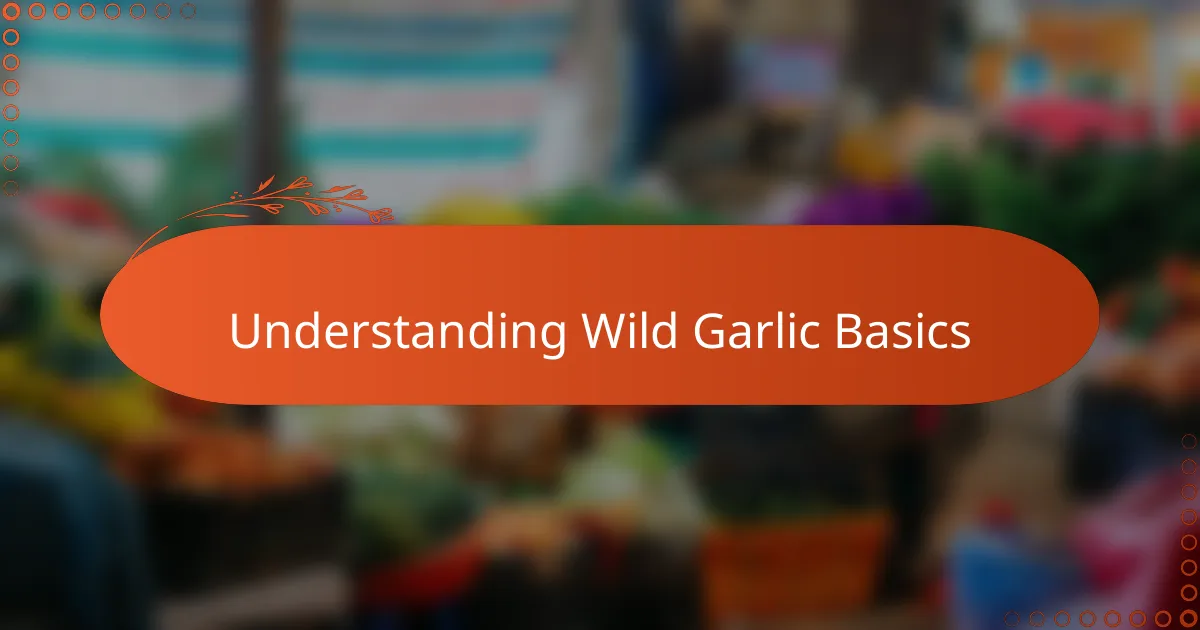
Understanding Wild Garlic Basics
Wild garlic, sometimes called ramsons, always fascinated me with its vibrant green leaves and that unmistakable garlicky scent. Have you ever stumbled upon a patch of it in the wild? The way it blankets forest floors in early spring made me realize how nature carefully hides these little treasures, waiting for someone curious enough to find them.
What I didn’t expect at first was how important it is to distinguish wild garlic from similar-looking plants. Learning to identify its broad, smooth leaves and tiny white flowers felt like unlocking a secret code. I remember feeling a mix of excitement and caution because, as with foraging anything wild, mistakes can happen.
Understanding the growth cycle of wild garlic also changed how I planned my foraging trips. It thrives in damp, shady woodlands and emerges before many other plants in spring, which means timing is everything. Once I grasped these basics, gathering wild garlic became not just a chore but a rewarding ritual that connected me deeper with the rhythms of the land.
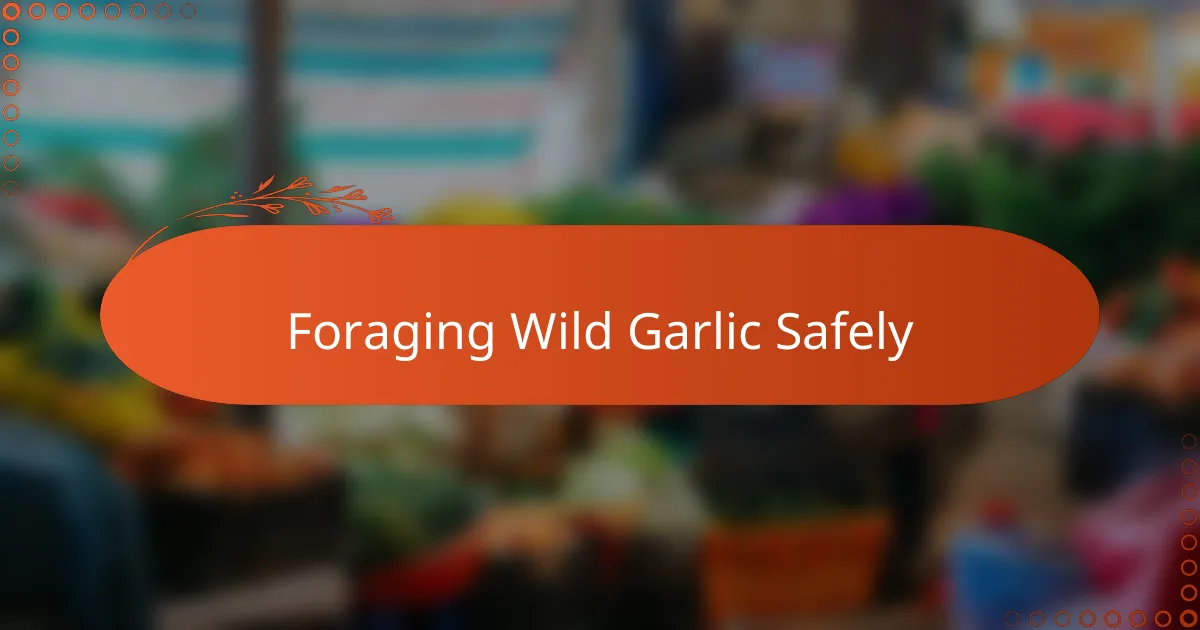
Foraging Wild Garlic Safely
Foraging wild garlic safely always made me pause and think carefully before reaching for those vibrant green leaves. Have you ever felt that thrill mixed with a bit of hesitation, knowing that some plants nearby might look similar but can be harmful? That sudden awareness pushed me to double-check my identification every time, trusting my senses but never relying on guesswork alone.
I learned early on that wearing gloves and harvesting only from clean, pollution-free areas isn’t just a precaution—it’s a habit that keeps the experience enjoyable and worry-free. There was one time when I ignored this and ended up with itchy hands, a reminder that respect for nature’s power goes hand in hand with respect for our own health.
What really helped me was carrying a small guidebook and using my phone to compare pictures when in doubt. It made the process less daunting and more like a fun detective game, ensuring that each handful of wild garlic was safe to bring back home. Have you ever turned foraging into a mindful adventure like that? It changes everything about how you connect with the land.
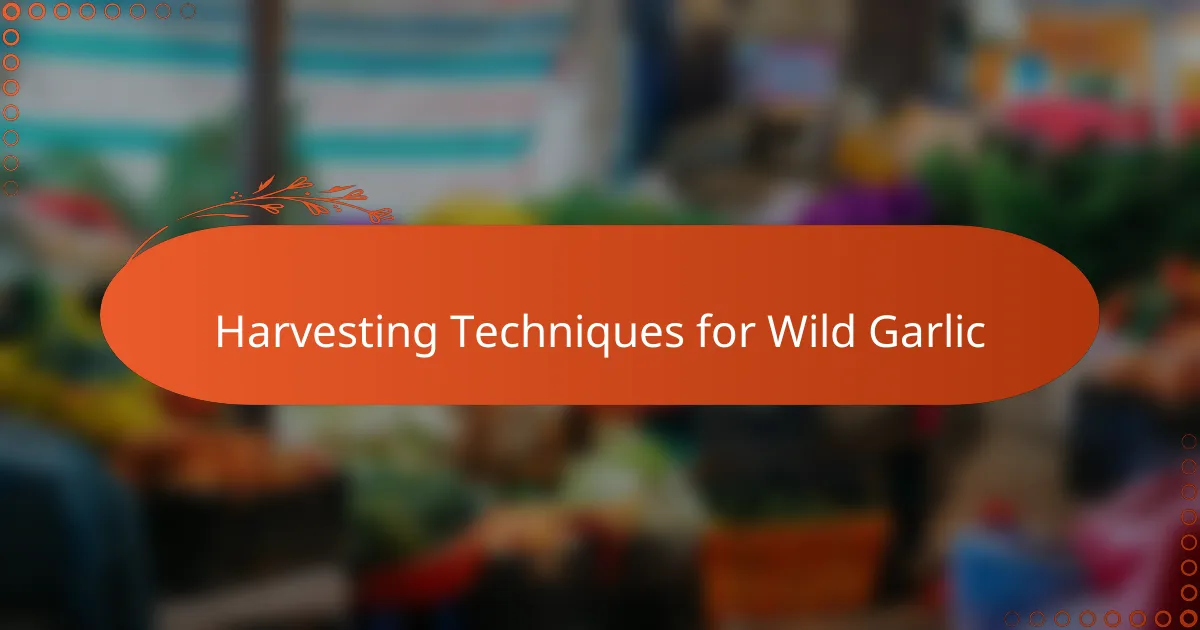
Harvesting Techniques for Wild Garlic
Harvesting wild garlic taught me that timing is everything. I usually aim to pick the leaves before the flowering stage when they’re most tender and flavorful. Have you noticed how delicate those early leaves feel? They almost melt between your fingers, and that’s when you know the pesto will taste just right.
One technique that worked for me was using scissors instead of pulling the plant out by the roots. This way, the wild garlic can continue to grow, and I don’t deplete the patch. It feels like a small act of kindness toward nature, letting me return season after season to gather fresh greens.
I also discovered the joy of harvesting in small batches. Instead of taking a whole large bundle at once, I pick leaves gradually from different spots. This keeps the plants healthy and keeps me connected to the land each time I step back into the woods. Doesn’t that pacing make the whole experience feel more respectful and sustainable?
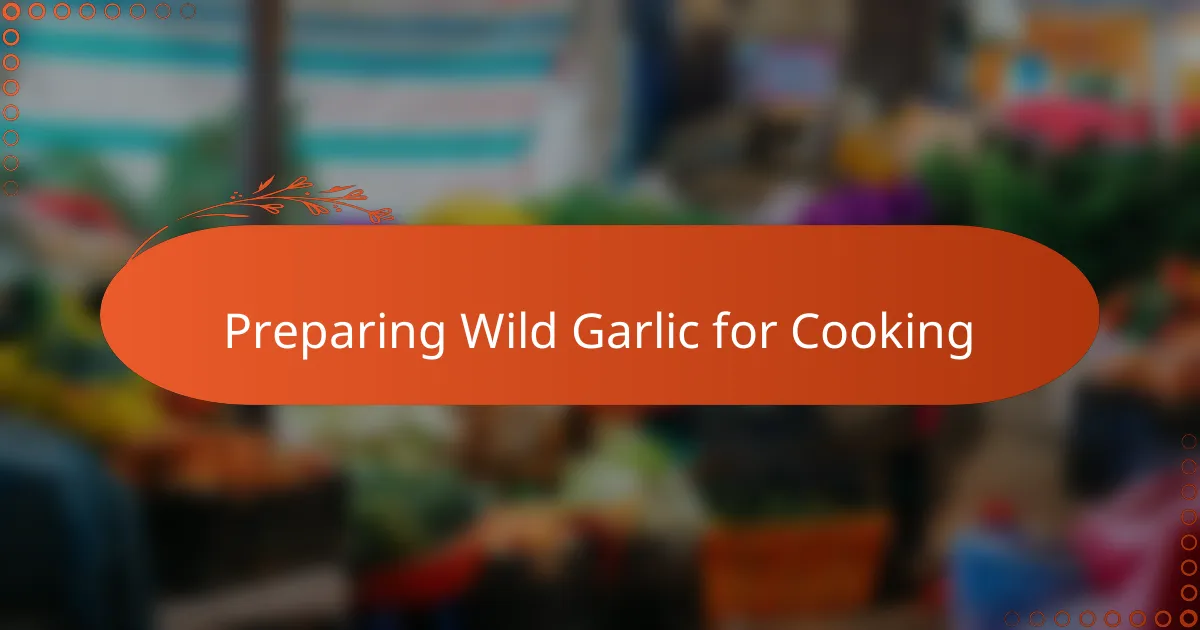
Preparing Wild Garlic for Cooking
Preparing wild garlic for cooking always feels like a delicate ritual to me. Once I bring the fresh leaves home, I give them a gentle rinse in cool water to wash away any dirt or tiny insects. Have you ever noticed how easily those thin leaves bruise? I’ve learned to handle them with care, patting them dry softly to keep their vibrant green color and that fresh aroma intact.
Trimming the wild garlic is another step I don’t skip. I usually cut off any tough stems or damaged leaves, focusing only on the tender parts that will blend smoothly into my pesto. It’s a small but satisfying task, almost like tuning an instrument before a performance—getting everything just right so the flavors sing together.
Sometimes, I let the leaves air dry briefly on a clean cloth before using them. This little pause gives me a moment to appreciate the subtle garlic scent filling my kitchen, reminding me of the wild walk that started this process. Don’t you find that these simple preparations deepen your connection to the food and the land where it came from? For me, it’s part of the joy that homesteading cooking always brings.
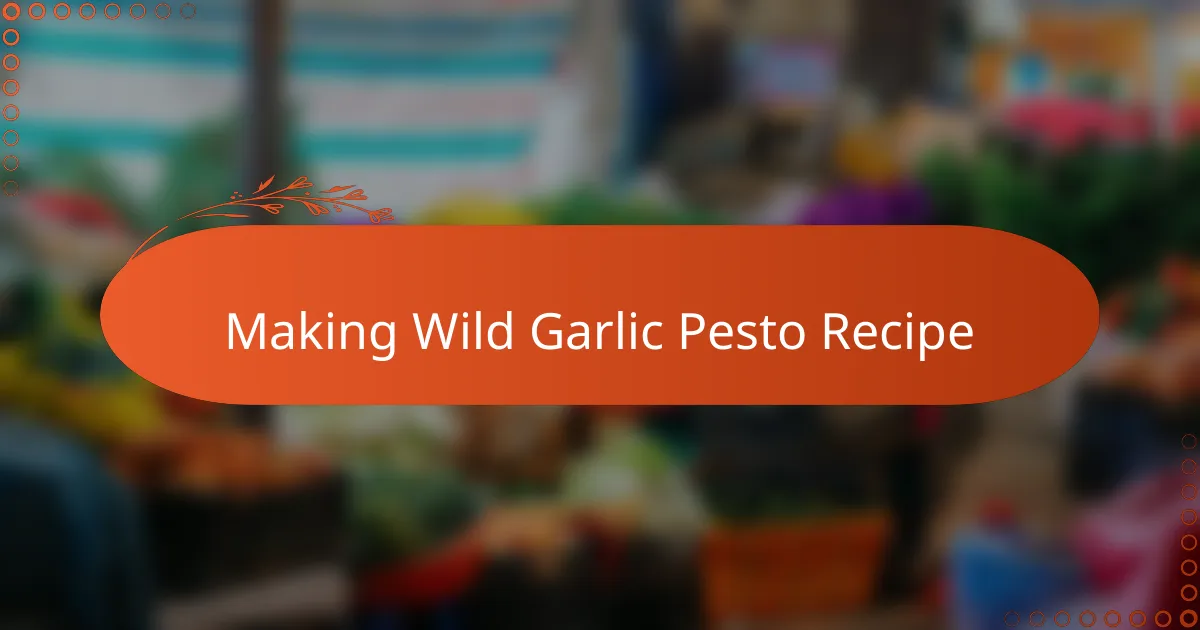
Making Wild Garlic Pesto Recipe
Blending wild garlic into pesto always feels like a moment of pure joy in my kitchen. I start by combining the prepared leaves with toasted pine nuts and a good handful of freshly grated Parmesan—have you noticed how those three ingredients suddenly lift the wild garlic’s bold aroma? Adding just enough olive oil to reach that creamy texture, I let the blender work its magic while imagining all the flavors mingling in harmony.
Sometimes, I like to tweak the recipe a bit—maybe a squeeze of lemon juice for brightness or a pinch of salt to deepen the taste. It’s those small adjustments that make the pesto uniquely mine, reflecting my mood and the season’s bounty. Have you ever felt that sense of creativity when cooking with wild ingredients? It’s like nature and your kitchen come together to tell a delicious story.
Once the pesto is ready, the first taste is always a thrill. I remember the first time I spread it on a warm slice of homemade sourdough—it was as if the wild garlic’s fresh, garlicky punch found its perfect match. Do you savor those moments when something so simple feels like a celebration of the land’s generosity? For me, that’s the real magic of making wild garlic pesto.
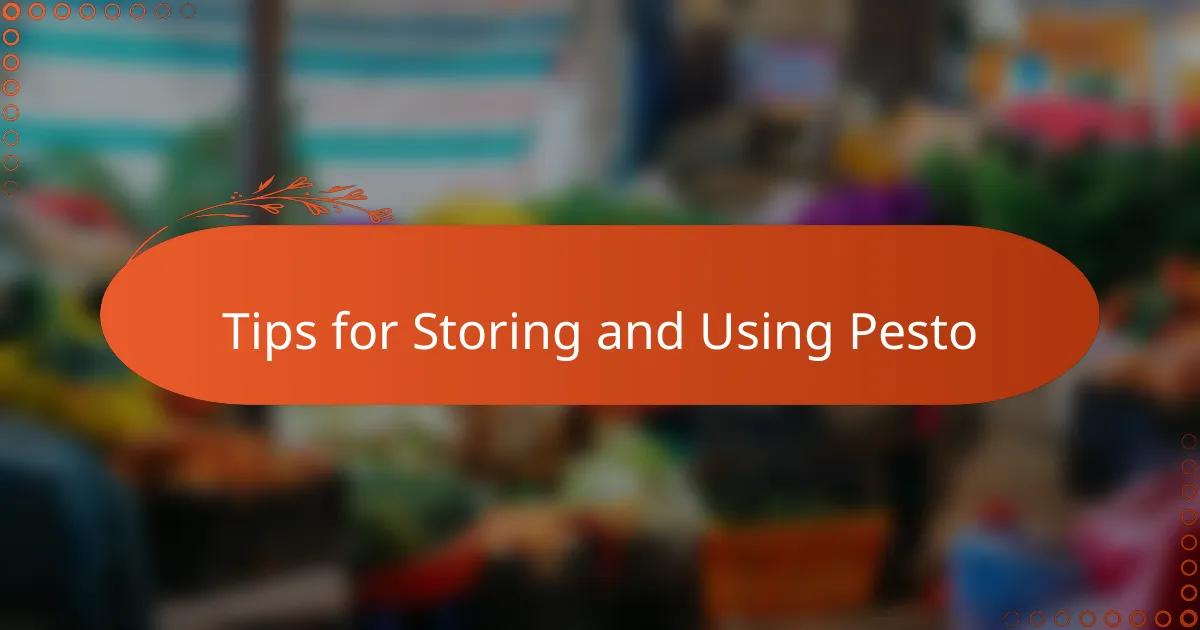
Tips for Storing and Using Pesto
Storing wild garlic pesto properly makes all the difference in preserving that fresh, vibrant flavor I love. I usually spoon it into a small jar and drizzle a thin layer of olive oil on top before sealing; this little trick keeps the pesto from turning brown and helps it stay fresh longer. Have you ever been disappointed when your pesto loses its bright color? This simple step really saves the day.
When it comes to using pesto, I find that it’s incredibly versatile beyond just pasta. Sometimes, I spread it on warm toast or dollop it onto roasted vegetables—each way adds a delightful punch of garlicky freshness. Don’t you think it’s wonderful how a spoonful can brighten so many dishes, making mealtime feel a bit more special?
Freezing pesto is another tactic I swear by, especially when I have a big batch. I freeze it in ice cube trays, then pop the cubes into a bag—this way, I can thaw just what I need without waste. It’s like preserving a little jar of spring to enjoy in the depths of winter, and for me, that’s a comforting connection to the seasons.
